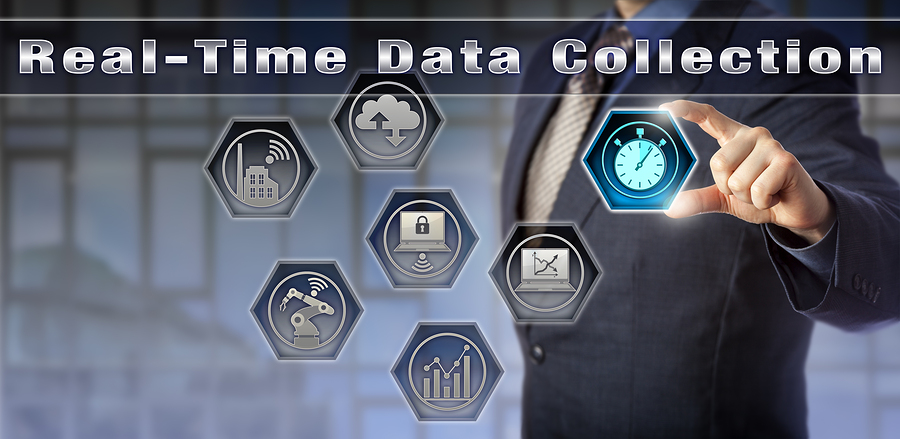Real-time data has become a reality thanks to cloud computing, the Internet of Things (IoT), and enhanced technology. When you understand the benefits of real-time data, you’ll never be able to go back to the days of nightly batch uploads and waiting for files to be delivered. Real-time data enables your business to remain sharp and competitive and make fast decisions that can impact the bottom line.
Why We Need Real-Time Data
Real-time data, or data that is “presented as it is acquired,” are obtained from the source and then immediately appear in the system used to access it. Many consider real-time data to be the most accurate information available.
Real-time data may be collected from many areas of a company. Both brick-and-mortar and ecommerce businesses—and hybrids thereof—capture real-time data from sales terminals, web shopping carts, warehouse systems, accounting and financial systems, and third-party applications such as UPS or other carriers. All this data must flow through one central point so it can be presented in a usable fashion.
With real-time data, your organization has an edge, able to track orders, update customers, even review inventory as information is changing. This in turn allows you to provide customers with the best information and service.
The Internet of Things (IoT) also provides real-time data from many aspects of a business that were once difficult to track. Data from sensors in equipment relay their status back to a central database, monitoring which equipment requires servicing, which remains idle, and which continues on schedule. This level of sophisticated data is what sets the average company apart.
Five Insights from Real-Time Data
Real-time data adds multiple benefits to information access for improved customer service. But there are more benefits to reap.
- Accurate scheduling: When you can view what is happening on the shop floor, in the warehouse, and in the dispatch unit of fleet vehicles in real-time, you can make improvements to the schedule. Tighten up timelines, improve estimates, and provide better information to your customers about expected delivery dates.
- Errors spotted immediately: With real-time data, you can stop production if too many items are rejected for quality issues. The same goes for shipments arriving in the warehouse. These may seem like small improvements, but they quickly add up to time and cost savings.
- Service improves dramatically: Real-time data flowing through an ERP system into customer service or sales departments ensures accurate and timely responses to shipping and other customer inquiries. Overall service improves dramatically which leads to higher levels of customer satisfaction.
- Cost-savings: If your inventory data is out of date, you may over- or under-order product, losing either sales or capital. By using real-time data to manage inventory levels, you’ll be able to keep stock levels consistent without wasting money ordering excess inventory.
- Enhanced sales and marketing data: Real-time sales and marketing data provides great insights into customer trends, sales trends, and more. With this information, you can make better decisions about sales and promotions. All this leads to higher sales and enhanced revenue.
Get into Real-Time Data With Accounting Systems, Inc.
If your current business software isn’t providing access to real-time data, your business can’t keep up with the marketplace. Easy access to more information faster, better, and easier is the key. With Accounting Systems, Inc., you have access to business and ERP software experts who will ensure your organization gets the real-time data access it needs to grow and remain profitable.
Whether your company is large or small, ASI can help you find the right software solution for your needs. We’ll even offer you a free accounting and ERP software consultation. Get started with ASI today.

